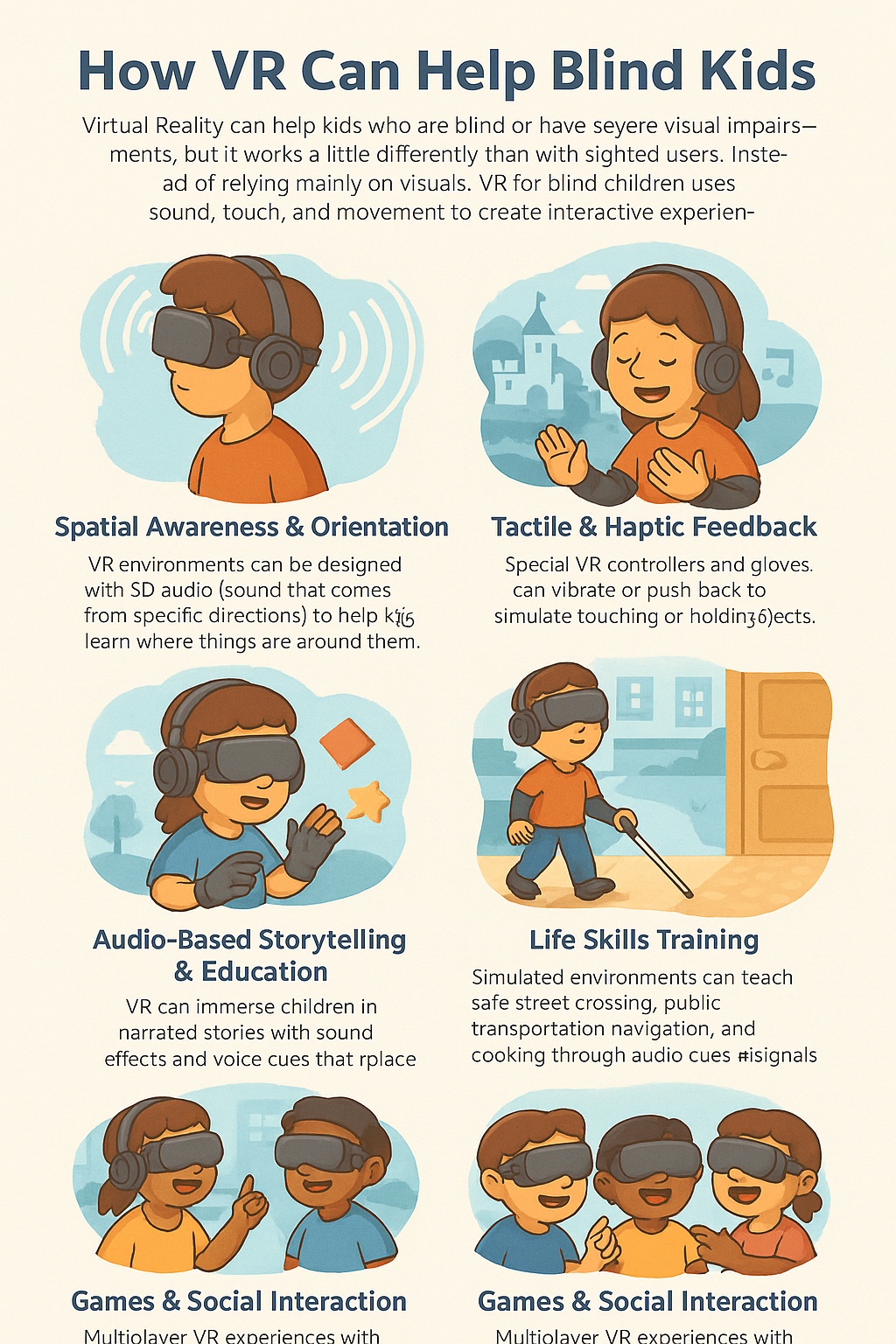
How VR Can Help Blind Kids
Virtual Reality can help kids who are blind or have severe visual impairments, but it works
a little differently than with sighted users. Instead of relying mainly on visuals, VR for blind
children uses sound, touch, and movement to create interactive experiences.
- Spatial Awareness & Orientation
How: VR environments can be designed with 3D audio (sound that comes from specific
directions) to help kids learn where things are around them.
Benefit: Improves navigation skills, confidence in moving through spaces, and
understanding of spatial concepts. - Tactile & Haptic Feedback
How: Special VR controllers and gloves can vibrate or push back to simulate touching or
holding objects.
Benefit: Lets blind kids “feel” virtual objects, shapes, and textures, which can aid learning
and exploration. - Audio-Based Storytelling & Education
How: VR can immerse children in narrated stories with sound effects and voice cues that
replace visuals.
Benefit: Improves listening skills, imagination, and language comprehension. - Life Skills Training
How: Simulated environments can teach safe street crossing, public transportation
navigation, and cooking through audio cues and haptic signals.
Benefit: Builds independence in a safe, risk-free setting. - Rehabilitation & Orientation Mobility Practice
How: VR can simulate real-world places (like a school building) so kids can practice moving
through them before visiting in person.
Benefit: Reduces anxiety and prepares them for real-life navigation. - Games & Social Interaction
How: Multiplayer VR experiences with audio focus allow kids to interact and play with
others through sound-based challenges.
Benefit: Builds social confidence and reduces isolation.

